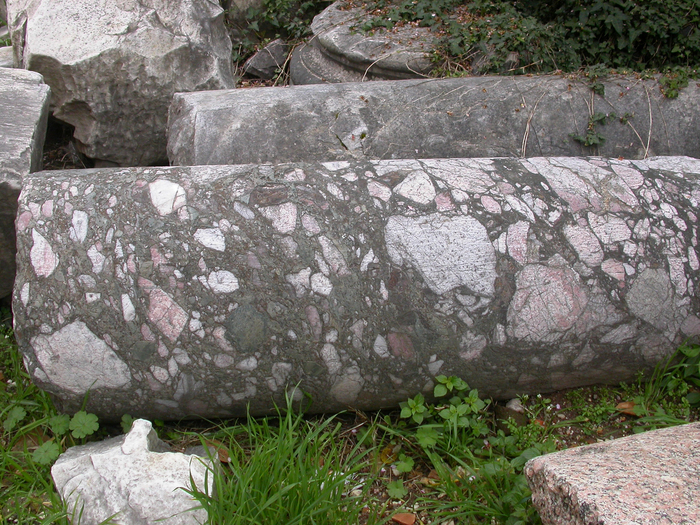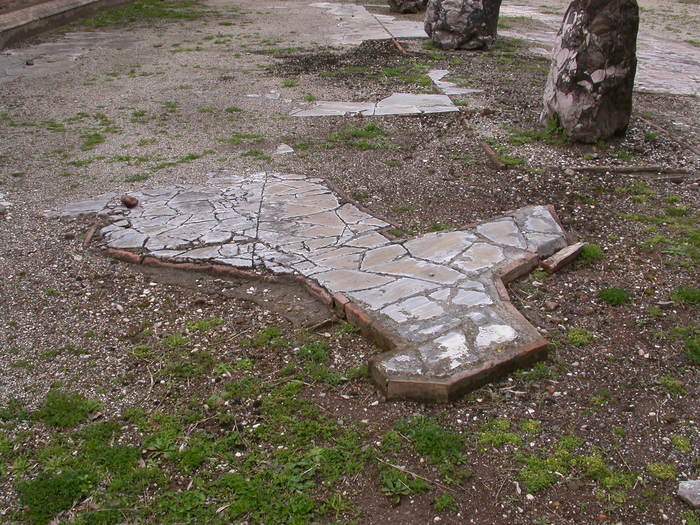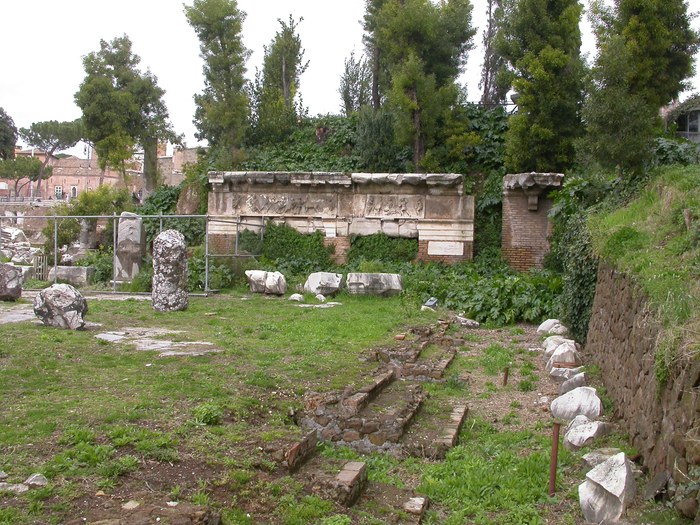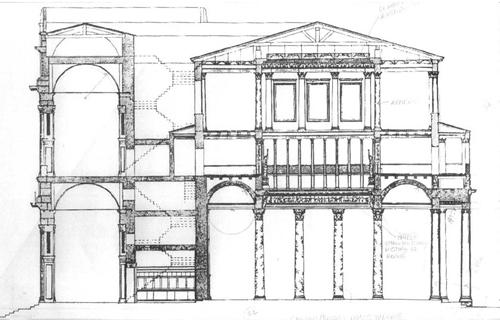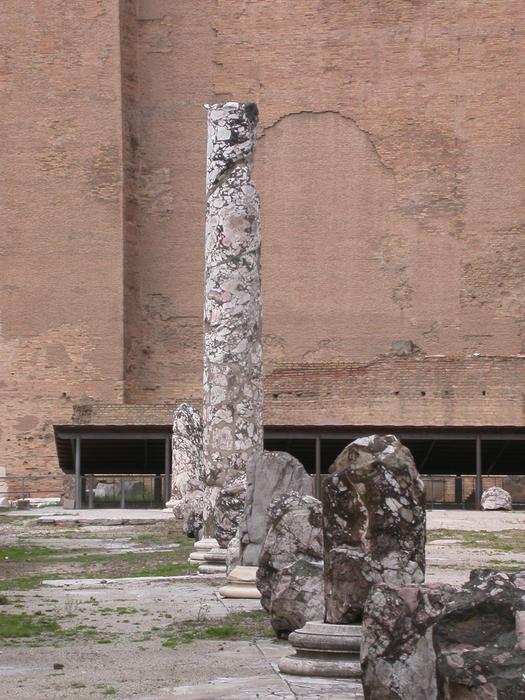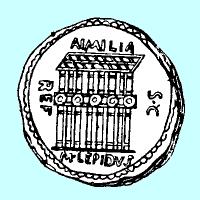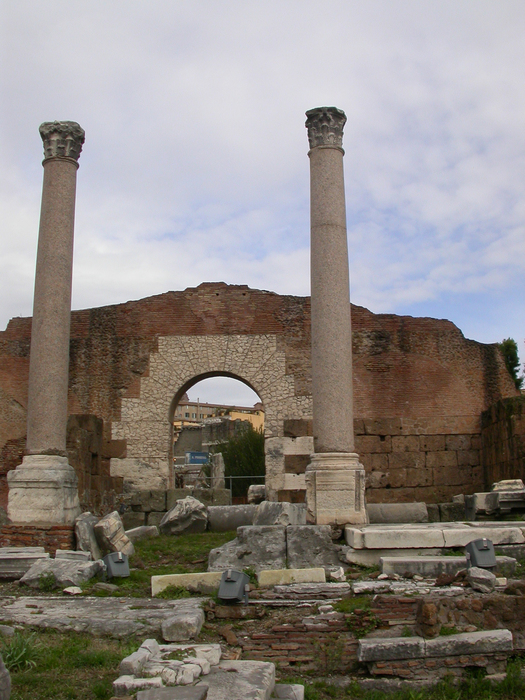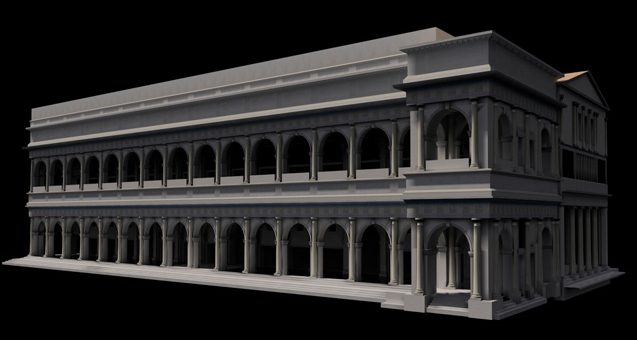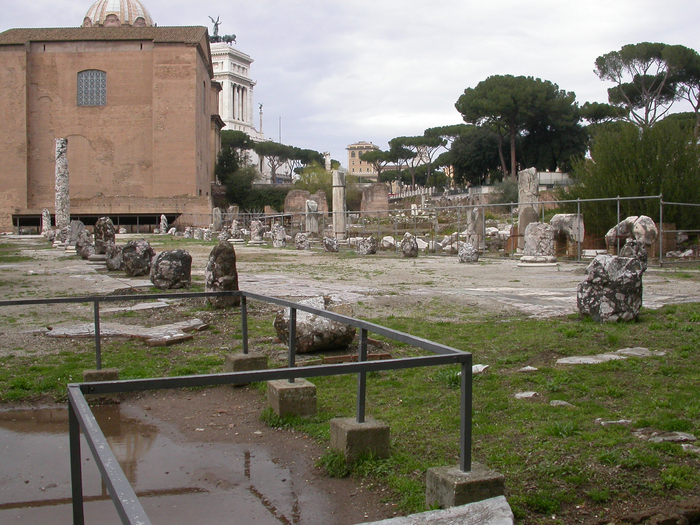
The Basilica Aemilia, also known as the Basilica Paulli,. It
has multiple names for a good reason - it fell into decay
and was repaired several times in Roman history, each time gaining
a new name. Prior to being a basilica it was a marketplace for
butchers (around 500 B.C.), then for bankers (around 400 B.C.).
The first basilica on this site was built in 179 B.C., by the
censors Marcus Aemilius Lepidus and Marcus Fulvius Nobilior. It
was rebuilt in 54 B.C. by L. Aemilius Paullus, whom Cicero
criticized for using salvage (such as the columns and floors) of
the previous building in his reconstruction. It was rebuilt again
in 22 A.D., at which time it was called one of the most
beautiful buildings in Rome.
